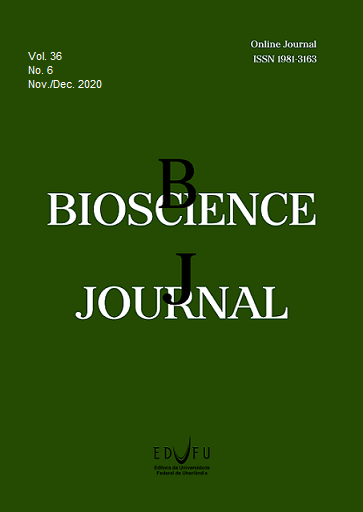A critical-point yield model to appraise the damage caused to soybean by white-mold
DOI:
https://doi.org/10.14393/BJ-v36n6a2020-55438Keywords:
Glycine max., Sclerotinia sclerotiorum, Sclerotinia stem rot.Abstract
A model to estimate the damage caused by white mold to soybean yield from experimental field data gathered during the summer season of 2009-10 was generated. Six soybean cultivars were grown on six sites of the Cerrados region, resulting in a total of nine separate experiments. The gradient of disease intensity (plant stem incidence) and yield was generated through the application of different fungicides and rates three times over the course of the season. The disease incidence in plant stems was evaluated at the R1, R5.2 and R5.5 growing stages. Manual harvest at the physiological ripening stage was followed by grain drying, threshing, and cleaning. Finally, grain yield was estimated in kg/ha, and regression analysis was performed. Nine linear equations representing the damage function were generated. The mean damage function was y = - 6.7 x + 1,000, where y represents grain yield normalized to 1,000 kg/ha and x represents WM incidence in plants. To appraise the damage caused by various disease intensities, these models should first be validated. Damage coefficients may be used to determine the level of economic damage.
Downloads
Published
Issue
Section
License
Copyright (c) 2020 Erlei M. Reis, Mateus Zanatta, Fernando Cezar Juliatti, Hercules D. Campos, Luis Henrique Carregal P. Silva, Maurício C. Meyer, José Nunes Junior, Cláudia B. Pimenta, Daniel Cassetari Neto, Andréia Q. Machado, Carlos M. Utiamada

This work is licensed under a Creative Commons Attribution 4.0 International License.





